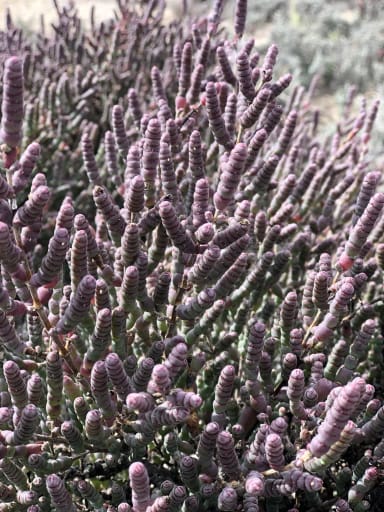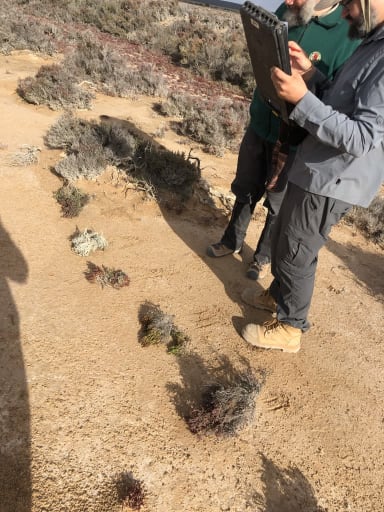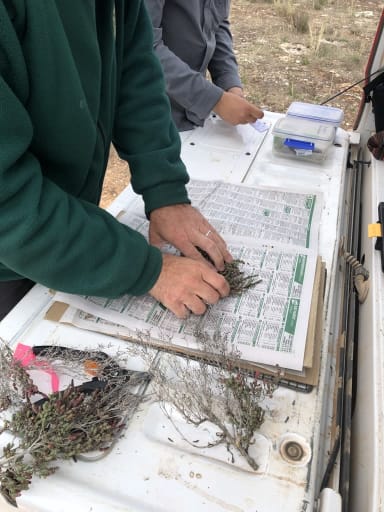
Seven Species of Samphire

Sarah Todd
There was one area left for me to explore on this field trip and that was the vegetation.
I was lucky enough to head out with two botanists from the state herbarium, Tim and Juergen who had brains like botanical encyclopaedias. Their recall for anything flora was amazing, as botany depends on memory for certain observable features.
What I didn’t realise is how tricky it is for a botanist to identify species. It is much more challenging than identifying vertebrates, generally because vertebrates are cuddly and more commonly identified and there’s comprehensive data on this, because they are commonly studied. The botanists explained the diagnosis for identification, which is particularly important for describing different species. Samples need to have fruit or flowers for ease of identification - without this, it can be near impossible!


We went to Fowlers Bay Conservation Park to sample Samphire, a succulent salt-tolerant plant which is in the same family as Saltbush. We found a woodland limestone area and began to scout. To my untrained eye, ALL the plants seemed the same species, but it was suggested they were in the same genera but all in fact different species. We began the procedure of collecting samples; it started with recording the location on a GPS, issuing an identification number, taking a photo of the shrub, describing the landscape, collecting a sample, giving the sample an identification tag, freeze drying leaves for later DNA analysis, pressing the specimen in-between cardboard and newspaper and securing it for the trip back to the herbarium. I was put to work today, using my "teacher handwriting" to label tags for the specimens before they were pressed… I got up to BS1290-112!
Samphire is a rather bulky specimen to preserve, so with 7 species collected, with two or more stems pressed in a layer, the stack of pressed samples was growing higher and higher… Thankfully these scientists drove from Adelaide and had a means of transport for their sample stacks!
Some new learning for me today was that there is such a thing as a parasitic plant, from the genus exocarapos. The roots tap into other plant areas and steal nutrients through the soil. How sneaky is that?!



